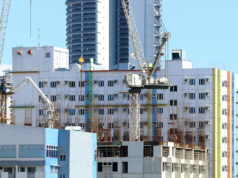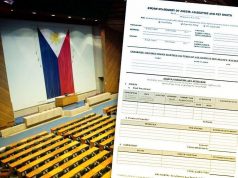Semirara on track to complete Panian pit rehab by mid-2019
SEMIRARA Mining and Power Corp. (SMPC) said it remains on track to finish backfilling activities for the southern part of Panian pit in Antique by June 2019, as part of the company’s efforts to restore ecological balance in the open-mine pit.
The Consunji-led integrated energy company said in a statement that it has already filled South Panian with 62.7 million bank cubic meters (BCM) of overburden materials as of end-June, comprising more than half its year-end target of 120 million BCM.
BCM refers to the volume of earth lying naturally that is neither loose nor compact due to mine-site activities such as excavation.
“The company is on track in terms of the progress of the southern part of Panian pit’s rehabilitation. Given our pace, we expect to finish filling up South Panian in June next year, and then we can proceed with preparing the soil for plants and trees,” SMPC President and Chief Operating Officer Victor A. Consunji was quoted as saying in a statement.
Mr. Consunji said they are dedicating 25 dump trucks and four excavators for the rehabilitation work in South Panian.
SMPC stopped mining operations in Panian last September 2016 after securing certification from the Department of Energy for the depletion of the pit’s mineable coal reserves.
It has since embarked on the Panian pit’s rehabilitation program as per a five-year work program and budget submitted to the energy department. This will restore Panian’s original landscape that had open grasslands with a variety of trees and shrubs.
The company plans to blanket the area with humic acid, compost, and other materials to add nutrients to the soil once the Panian pit becomes a stable landform. It will also undertake a massive reforestation program where endemic and suitable plant species will be planted.
As of end-June, SMPC has already planted more than a million trees in the area, including beach agoho, narra, and molave, among others. Surviving mangroves planted in Semirara Island’s shorelines have also reached over 650,000 across more than 196 hectares.
Meanwhile, SMPC’s environmental project called Semirara Marine Hatchery Laboratory has also produced more than 144,000 giant clams in the area as of the first half of 2018. The company noted that giant clams are very sensitive to water quality, and thus cannot thrive in polluted areas.
SMPC’s net income attributable to the parent went up by three percent to P8.13 billion in the first six months of 2018, after gross revenues jumped by a fifth to P23.96 billion during the same period.
Shares in SMPC went up 55 centavos or 1.9% to close at P29.55 apiece at the stock exchange on Monday. — Arra B. Francia



